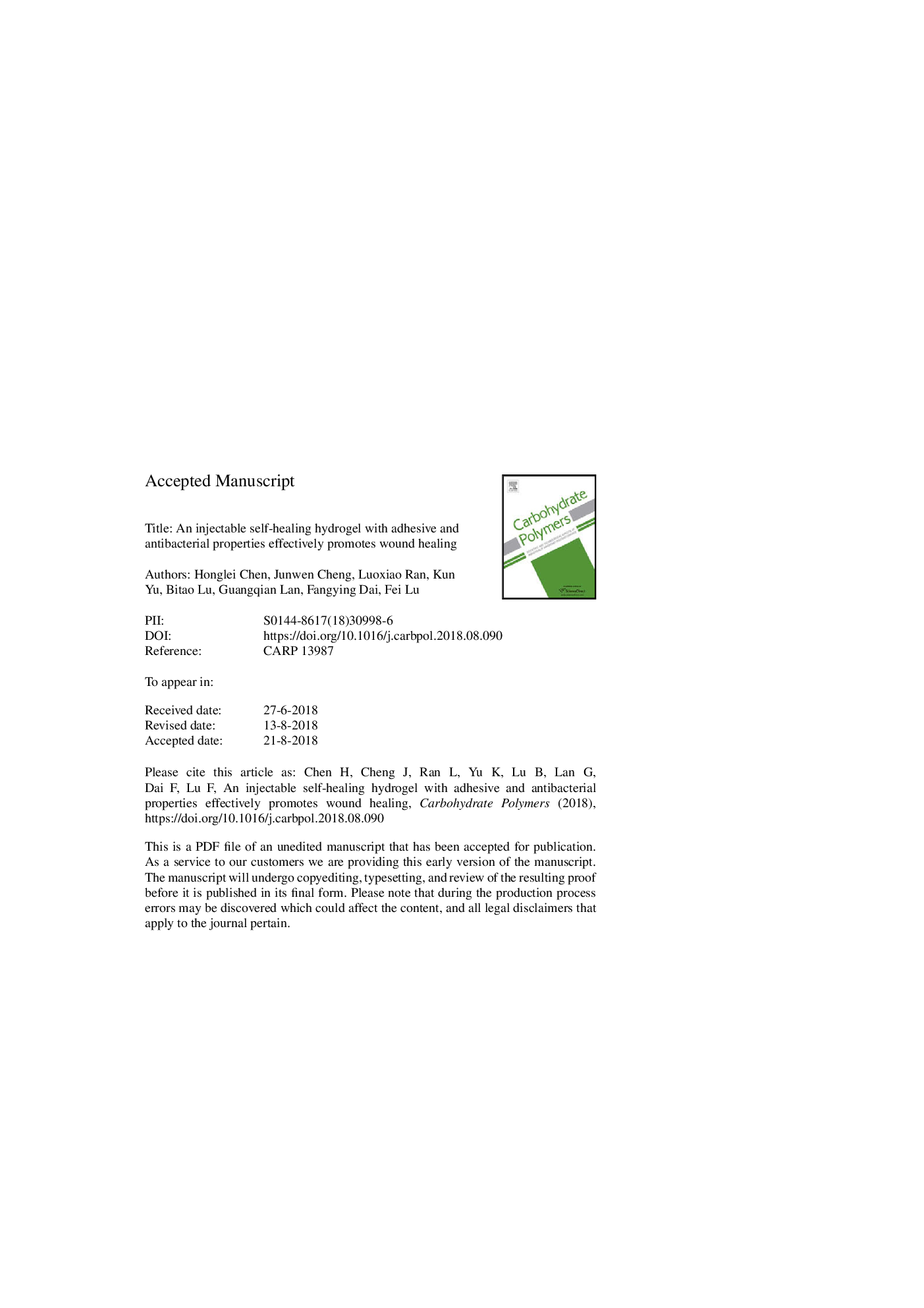| Article ID | Journal | Published Year | Pages | File Type |
|---|---|---|---|---|
| 10128071 | Carbohydrate Polymers | 2018 | 32 Pages |
Abstract
Hydrogels with self-healing capacity can undergo self-repair, establishing safer and longer-lasting products. Hydrogel wound dressings showing self-healing capacity can prolong the lifespan of the material and provide better wound protection. Therefore, in this study, Schiff base reactions (reversible imine linkages) were utilized to design injectable self-healing hydrogels with chitosan and konjac glucomannan. Oxidized konjac glucomannan was used to react with chitosan to form hydrogel. In addition to injectable, self-healing properties, the hydrogels also had adhesive and antibacterial properties, were biocompatible, and promoted wound healing. The inhibition rates of hydrogels against Staphylococcus aureus and Escherichia coli were 96% and 98%, respectively. In addition, microscopy and rheological analyses showed that the hydrogels healed within 4âh without additional exogenous stimulation. Finally, the developed hydrogels were injectable and significantly shortened wound recovery time in a full-thickness skin defect model. Thus, our findings established a novel hydrogel material that may have applications in wound healing.
Related Topics
Physical Sciences and Engineering
Chemistry
Organic Chemistry
Authors
Honglei Chen, Junwen Cheng, Luoxiao Ran, Kun Yu, Bitao Lu, Guangqian Lan, Fangying Dai, Fei Lu,
